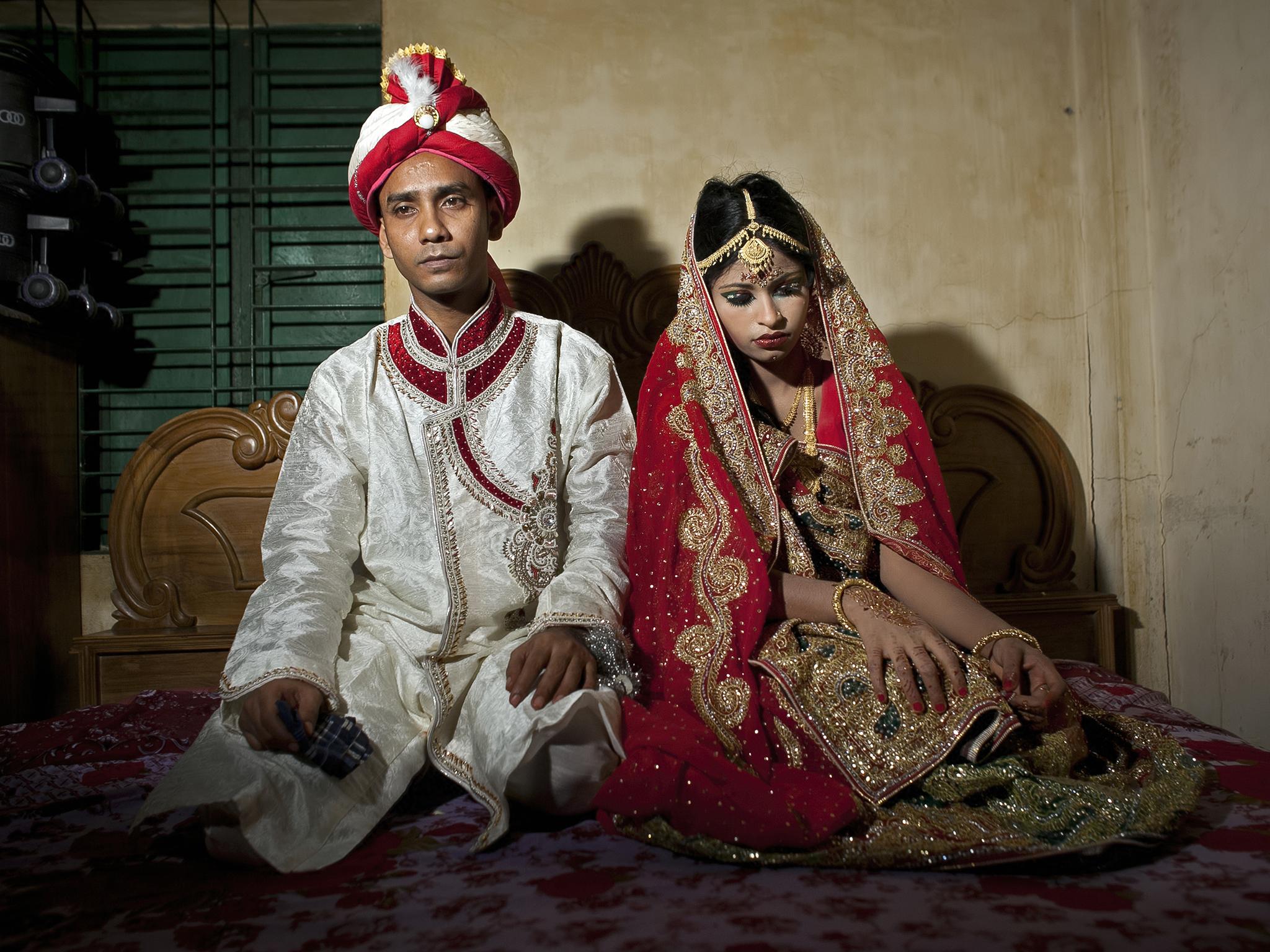One girl under 15 is married every seven seconds, new Save the Children research says
One girl under 18 is married every two seconds

Your support helps us to tell the story
From reproductive rights to climate change to Big Tech, The Independent is on the ground when the story is developing. Whether it's investigating the financials of Elon Musk's pro-Trump PAC or producing our latest documentary, 'The A Word', which shines a light on the American women fighting for reproductive rights, we know how important it is to parse out the facts from the messaging.
At such a critical moment in US history, we need reporters on the ground. Your donation allows us to keep sending journalists to speak to both sides of the story.
The Independent is trusted by Americans across the entire political spectrum. And unlike many other quality news outlets, we choose not to lock Americans out of our reporting and analysis with paywalls. We believe quality journalism should be available to everyone, paid for by those who can afford it.
Your support makes all the difference.Every seven seconds a girl under the age of 15 is married, according to new research by Save the Children.
The ‘Every Last Girl’ report from the charity shows that girls as young as 10 years old are being forced to marry men, often much older than themselves, which exposes them to domestic violence, abuse and rape.
The report has created a new index ranking countries according to the levels of child marriage, schooling, teen pregnancy, maternal deaths and the number of female MPs.
The report found that when the levels of underage marriage are raised to include girls under the age of 18, the frequency of these ceremonies jump to every two seconds, with girls often forced to marry older men in countries such as Afghanistan, Yemen, India and Somalia.
India has been named as the country with the highest number of child marriages globally, with nearly half of all girls – around 24.6 million - married before they reach the age of 18. The report also recognises that these high numbers are partly to do with the population size in the country.
Those from poor families are more likely to be married at a young age, with 40 per cent of the poorest girls in Nigeria found to be married by the age of 15, compared to only three per cent of the country’s richest girls.
The report also found that girls suffer the most during crises and are disproportionately affected during conflict. In Lebanon, many Syrian refugee girls have been married off by their families as a safety or coping mechanism, while in Sierra Leone during the Ebola outbreak the shutting down of schools led to around 14,000 teen pregnancies.
The charity highlighted the case of a 14-year-old Syrian girl named Sahar, which is not her real name, whom it supports in Lebanon. Sahar was married at the age of 13 to a 20-year-old man and is currently two months pregnant.
She said: “The wedding day, I was imagining it would be a great day but it wasn’t. It was all misery. It was full of sadness. Many girls who get married at a young age get illnesses and suffer from bleeding. Thank God it didn’t happen to me.
“I feel really blessed that I am having a baby. But I am a child raising a child.”
Save the Children CEO Kevin Watkins called child marriage a “form of violence” which robs girls of their freedom.
“Forcing girls to marry much older men robs them of their freedom and amounts to sexual slavery. Instead of being in school, married girls face domestic violence, abuse and rape. They fall pregnant and are exposed to STIs including HIV. Bearing children before their bodies are ready means girls suffer complicated deliveries and even death,” he said.
The charity, which runs a range of programmes to support disadvantaged girls around the globe, is calling for governments to help bring an end to child marriage. Despite the current pledge by the international community to end child marriage by 2030, the charity estimates that if the practice follows the current trend, the number of child brides will increase from 700 million today to an estimated 930 million by 2030 and 1.2 billion by 2050.
Join our commenting forum
Join thought-provoking conversations, follow other Independent readers and see their replies
Comments